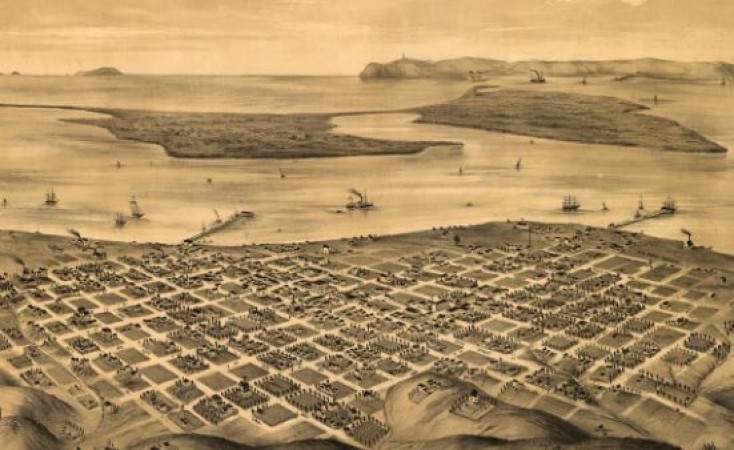
San Diego California, region began in the present state of California when Europeans first began inhabiting the San Diego Bay region. As the first area of the California in which Europeans settled, San Diego has been described as "the birthplace of California.
The history of San Diego is a captivating tale that spans thousands of years, characterized by the interactions of diverse cultures and the dramatic transformation of a once small settlement into a bustling metropolis. From its early Native American inhabitants to its status as a major city in California, San Diego's journey is filled with rich experiences, exploration, and growth.
Also Read: Pluckley Village: Unraveling the Mysteries of England's Most Haunted Village
Long before European settlers arrived, the region now known as San Diego was home to several indigenous tribes, including the Kumeyaay people. These Native Americans thrived in the area for thousands of years, building sophisticated societies and adapting to the diverse environments, from the coast to the mountains and deserts. The Kumeyaay were hunter-gatherers who relied on the land's resources for sustenance and lived in small villages, creating intricate systems of social organization.
San Diego's history with European influence began in 1542 when the Portuguese explorer Juan Rodriguez Cabrillo, sailing under the Spanish flag, became the first known European to set foot in the region. He claimed the area for Spain, though it wasn't until 1769 that Spanish colonization efforts truly took hold. That year, Gaspar de Portolà established the Presidio of San Diego and the Mission San Diego de Alcalá, marking the birth of modern San Diego.
Also Read: Eco-Tourism: A Journey of Conservation and Discovery
The Spanish missionaries aimed to convert the local Native Americans to Christianity and expand Spanish influence in the region. The missions were central to the colonization process, and their establishment led to the disruption of the Kumeyaay way of life. Despite resistance, some Native Americans worked and lived at the missions, and the land around them was cultivated for agriculture. Mission San Diego de Alcalá became the first in a chain of 21 missions that extended along the California coast.
In the early 1800s, Mexico gained independence from Spain, and San Diego became part of Mexican territory. The Mexican period saw little development in the region, and the missions declined in importance. In 1846, during the Mexican-American War, the United States took control of San Diego and California as part of the Treaty of Guadalupe Hidalgo, ending the war in 1848.
Also Read: California City: Hearts of the US
After the war, San Diego experienced a period of growth and development. The 1850s brought an influx of immigrants, including Europeans, Asians, and other Americans seeking new opportunities in the wake of the Gold Rush. San Diego's natural harbor and its proximity to the Mexican border made it a vital port and a gateway for trade and commerce.
However, the region's growth was slower compared to other parts of California, partly due to its isolation and lack of a reliable water supply. It wasn't until the late 1800s when efforts to bring water from the Colorado River to the city began, leading to significant agricultural expansion and boosting economic prospects.
Also Read: Santa Susanna: A Roman Catholic Parish Church
Military Presence and World War II: The late 19th and early 20th centuries also saw an increased military presence in San Diego. The establishment of naval facilities, such as the Naval Training Center and Naval Air Station, played a crucial role in shaping the city's identity as a military hub, which continues to this day.
During World War II, San Diego played a vital role in the war effort. The city's naval bases were central to the Pacific theater, providing a strategic location for training and deploying troops and ships.
The post-war period marked a significant turning point for San Diego. The region experienced a population boom as veterans and others sought a better quality of life in the mild climate and growing economy. The aerospace and technology industries flourished, and the University of California, San Diego (UCSD), was established in 1960, becoming a leading research institution.
Also Read: Amsterdam: A Timeless Fusion of History
Throughout the latter half of the 20th century, San Diego underwent rapid urbanization and expansion. New neighborhoods sprouted, and the city's skyline evolved with the construction of tall buildings and landmarks. The growth of the tourism industry, driven by San Diego's beautiful beaches, attractions like SeaWorld and the San Diego Zoo, and a pleasant climate, contributed significantly to the city's economy.
In the 21st century, San Diego continued to thrive as a vibrant and diverse city. It attracted residents and businesses from various cultural backgrounds and remained a popular destination for tourists worldwide.
San Diego's rise to prominence has not been without challenges. Issues like water scarcity, traffic congestion, and housing affordability have posed ongoing concerns for residents and city officials. The region has also faced occasional wildfires and natural disasters, which tested the community's resilience.
Also Read: Aachen Cathedral: Symbol of Continuity and resilience
San Diego remains a hub for innovation and a center for research, with numerous scientific and biotechnology firms calling the city home. The military continues to be a significant presence, with bases like Marine Corps Base Camp Pendleton and Marine Corps Air Station Miramar contributing to the local economy.
San Diego's history is a tapestry woven with the threads of indigenous heritage, Spanish colonization, Mexican influence, and American expansion. From its modest beginnings as a mission outpost to its current status as a bustling metropolitan area, the city has undergone remarkable transformations while preserving its diverse cultural heritage. As San Diego ventures into the future, its ability to adapt and thrive will continue to shape its narrative for generations to come.
Also Read: Zimbabwe: A Journey Towards Stability and Prosperity